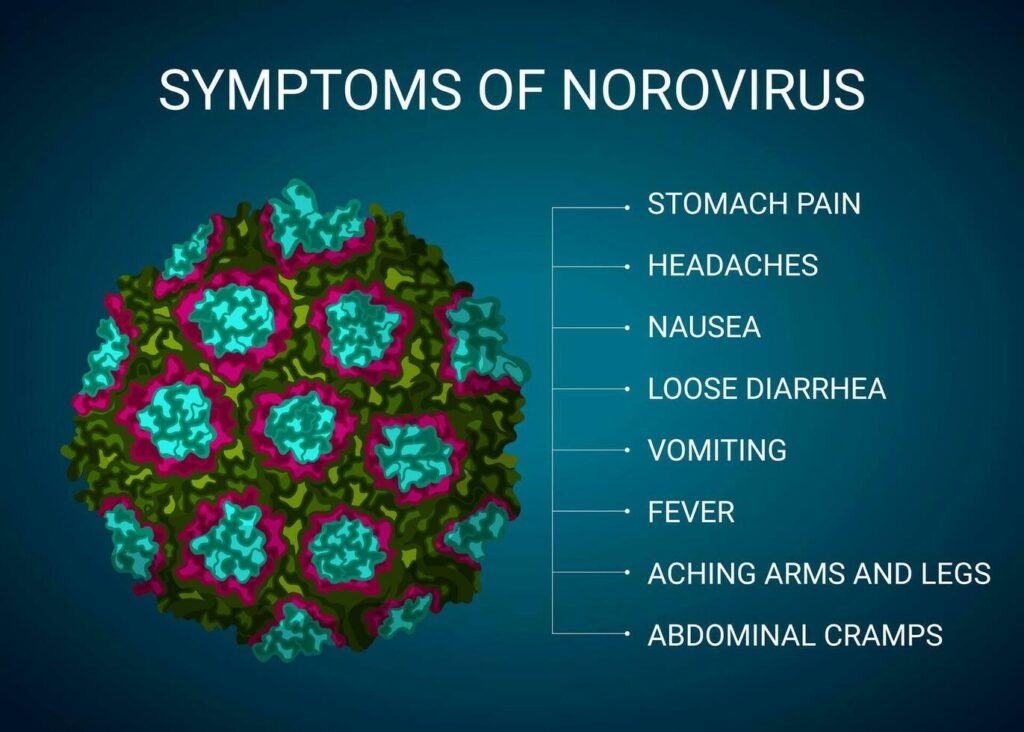As winter tightens its grip, health officials in Tulsa, Oklahoma, sound a warning about the Norovirus, a highly contagious pathogen that brings infection and inflammation to the digestive system. Concurrently, respiratory illnesses, including the flu, are on the rise, posing a multifaceted challenge to public health. This article delves into the current health landscape, shedding light on the symptoms, precautions, and emerging concerns surrounding Norovirus and respiratory infections.

Norovirus Awareness in Tulsa
Amid the ongoing respiratory season, the Tulsa Health Department cautions the public about the Norovirus. Abhishek Shakya, an epidemiologist, outlines common symptoms—nausea, vomiting, diarrhoea, abdominal cramps, low-grade fever, chills, headaches, muscle aches, and lethargy. Unlike the flu and COVID-19, Norovirus primarily affects the digestive system.
Preventive Measures
Shakya emphasizes specific precautions to avoid Norovirus and respiratory infections. While respiratory illnesses warrant staying home, wearing masks, and testing, Norovirus prevention involves steering clear of faeces contamination and vomit. The vulnerable groups, including the young, elderly, those with underlying health conditions, or pregnant women, are urged to take extra precautions against respiratory illnesses.

Winter Challenges in the UK
Beyond Tulsa, the winter health scenario unfolds with challenges in the UK. Norovirus cases surge, reaching 40% higher than the seasonal average. Hospitals grapple with a simultaneous increase in flu patients, straining healthcare resources. The rising instances of a highly contagious winter vomiting bug coincide with cold weather, leading to hospital closures and restricted visiting hours.
Norovirus Trends and Resilience
Norovirus, notorious for swift transmission in care homes and hospitals, exhibits a 40% spike in cases compared to the last five years. This surge is attributed, in part, to the recent cold weather. Professor Sir Stephen Powis, NHS national medical director, acknowledges the challenging winter, compounded by staff shortages, high bed occupancy, and delayed patient discharges.

|Credit: inspiring.team // Shutterstock
Copyright: inspiring.team
Flu Peaks and Hospital Struggles
Simultaneously, the rise in flu infections amplifies the strain on healthcare systems. NHS hospitals, dealing with heightened bed occupancy and delayed patient discharges, grapple with a surge in flu-related hospitalizations. The challenges extend beyond capacity issues, with NHS staff contending with high bed occupancy, exacerbated by the lingering effects of recent strikes by junior doctors. The cumulative impact underscores the need for robust strategies to navigate the complexities of a demanding winter.
Flu infections add to the strain, with an average of 1,500 daily hospitalizations, including critical cases. NHS staff face challenges clearing beds, and delays in discharging medically fit patients exacerbate the situation. The pressures on the healthcare system highlight the need for increased investment across various healthcare sectors to meet growing demand.
Impact of Strikes on NHS
Saffron Cordery, deputy chief executive for NHS Providers, points out that recent strikes by junior doctors have intensified the strain on the NHS, contributing to patient care delays. The impact of prolonged industrial action raises concerns about patient well-being and the need for additional resources.

| Credit: Shutterstock
The report was inspired by the post
For more latest trendy news like this visit our Latest News page. Please visit our Contact Us page in the footer menu to contact us. You can check out our Best Deals page for various needy offers and deals of the day. To know more about us visit the About Us page in the footer menu. You can also read our Disclaimer, Affiliation Disclosure and FAQs page in the footer menu. You can also find the Webstory Page in the footer menu to see our latest published web stories.


